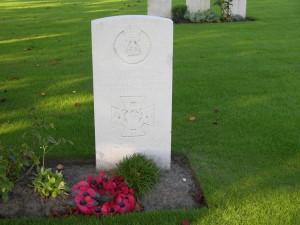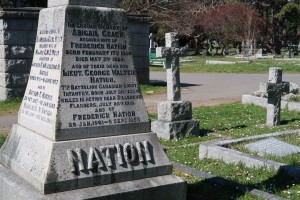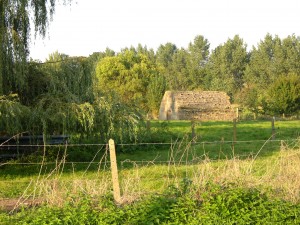Frederick Youens VC

Second Lieutenant Frederick Youens VC
13th Battalion Durham Light Infantry
(Durham Light Infantry Image)
Near Hill 60, Belgium: Action of 7 July 1917
LOYAL, TRUE AND KIND A BEAUTIFUL MEMORY LEFT BEHIND
For most conspicuous bravery and devotion to duty. While out on patrol this officer was wounded and had to return to his trenches to have his wounds dressed. Shortly afterwards a report came in that the enemy were preparing to raid our trenches. 2nd Lt. Youens, regardless of his wound, immediately set out to rally the team of a Lewis gun, which had become disorganised owing to heavy shell fire. During this process an enemy’s bomb fell on the Lewis gun position without exploding. 2nd Lt. Youens immediately picked it up and hurled it over the parapet. Shortly afterwards another bomb fell near the same place; again 2nd Lt. Youens picked it up with the intention of throwing it away, when it exploded in his hand, severely wounding him and also some of his men. There is little doubt that the prompt and gallant action of 2nd Lt. Youens saved several of his men’s lives and that by his energy and resource the enemy’s raid was completely repulsed. This gallant officer has since succumbed to his wounds.
Railway Dugouts Burial Ground (Transport Farm) was a significant place of the fallen that I wanted to visit for many years. Not only was this the burial site of Frederick Youens VC but also of two well known Victoria, B.C. residents; Captain William Dumbleton Holmes DSO, MC and Lieutenant George Walter Nation. Both B.C. soldiers served with the 7th Canadian Infantry Battalion and Nation was well known to me, as I had frequented the Nation family memorial (an obelisk) at Ross Bay Cemetery and viewed the Nation memorial window at Christ Church Cathedral, Victoria. Holmes, though I knew of the well-known family, was anchored in memory by a rather battered newspaper clipping I once saw. I have yet to connect Holmes to another location here in Victoria…perhaps one day this will come or perhaps there is a surprise amongst the thousands of images taken in my wanders at home?
As always, prior to my arrival in France and Flanders, I had prepared a record of Great War landscapes to view and observe. My intention, after finding specifics, to search amongst the markers, grounds, and landscapes to find the resonance of voices amongst the stone story boards that provide clues to their living lives. Row by row I walk, see and read, camera in hand. This is how Youens VC was happened upon and so too others…Moore, Lawson, Dodgson, Broughton, the unknown Sikhs of the Indian Army and the others…so many lives.
Railway Dugouts Burial Ground, also known as Transport Farm, was first established in April 1915. Between 1916 – 1917 the cemetery was in heavy use due to the number of Advanced Dressing Stations dug into the nearby railway embankment near to the Ieper Railway Station. Frederick Youens VC died 7 July 1917…his Victoria Cross is exhibited at the Durham Light Infantry Museum and Durham Art Gallery.

Youens marker at Railway Dugouts Burial Ground (Transport Farm), Belgium, Age 24
(P. Ferguson image, September 2005)
Helpful Link
Durham at War



Comments